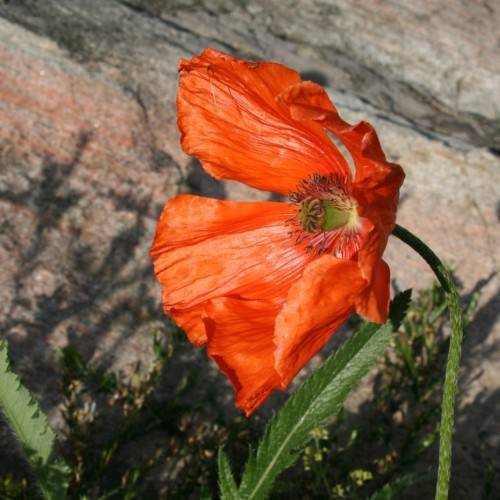
poppy
Papaver oreophilum
Cycle:
Herbaceous Perennial
Watering:
Average
Hardiness Zone:
4 - 9
Flowers:
Flowers
Sun:
Full sun
Leaf:
Yes
Growth Rate:
Low
Maintenance:
Low
Poisonous To Pets:
Yes
Drought Tolerant:
Yes
Salt Tolerant:
Yes
Care Level:
Medium
watering
Poppy (Papaver oreophilum) plants prefer well-drained soil with a pH balance between 6.5 to 7.5. Water them on a regular basis, every couple of days in dry climates or once a week in wet climates. Make sure that the soil is not too dry before watering; check the top 1-2 inches to gauge if moisture is present. During the growing season, water your poppies more coarsely. This will help to ensure maximum growth. Water the plants deeply but infrequently. Avoid overwatering as this can cause damage to the plant's roots. Besides watering, it is also important to mist or spray your poppies to maintain a higher level of humidity. This will help to keep the plants healthy and strong.
sunlight
Poppy (Papaver oreophilum) thrives in regions with plenty of full sun exposure. These plants need at least 6 hours of direct sunlight every day to maximize flower production and encourage healthy growth. The best time to provide sunlight to poppies is from mid-morning to late afternoon when the sun is at its peak intensity. Avoid placing poppies in locations that receive direct sunlight during the hottest parts of the day such as noon, as this can cause the plant's foliage to become scorched and brown.
pruning
Poppy (Papaver oreophilum) can be pruned twice a year: once after flowering and then again in late summer or early fall. Prune the plants after the flowers have faded so that new, healthy shoots will emerge for the next season. While pruning, cut off any damaged, dead, or diseased stems. In the first pruning in spring, trim the spent flower stalks right down to ground level. This will give the plants a clean appearance and remove any potential harboring places for fungi or diseases. For the second pruning around late summer or early fall, cut back the stems to 8-10 inches tall. This will help them stay compact and prevent them from becoming overgrown and spreading too much. Pruning poppy plants is important to keep them growing healthy and looking their best, so don't forget to do it twice a year.
Propagation
Season
Hardiness Map
FAQ
Do poppies symbolize anything specific?
Poppies are widely recognized as symbols of remembrance for those who have fought in wars. In particular, the red poppy is associated with World War I and is often worn in remembrance of those who died in places such as the trenches in Europe or the Western Front. The poppy is also seen as a sign of hope and is used to remember and honor those who have served in the armed forces. Additionally, poppies are symbolic of the beauty that can emerge from destruction because they are some of the first flowers to sprout after an area has been bombarded.
Are poppies native to all continents?
No, poppies are not native to all continents. Poppies primarily grow in the temperate regions of the Northern Hemisphere, particularly in Europe, Asia, and North Africa. In the United States, varieties of poppies can be found growing wild in certain regions. While certain species of poppies can be cultivated in the Southern Hemisphere, they are not commonly found growing in the wild.
Can we grow poppies as indoor Plant?
Yes, poppies can be grown as an indoor plant. Poppies are a popular choice for indoor gardeners because they don’t require a lot of care and will usually thrive in nearly any environment. This makes them perfect for growing under artificial light. All poppies require is a well-draining soil, regular watering and plenty of light for them to thrive indoors. To ensure that your poppies get enough light, place them near a window or beneath a grow light.
